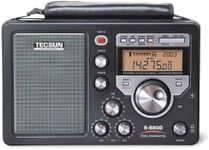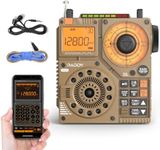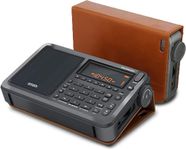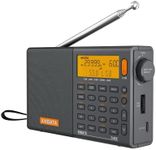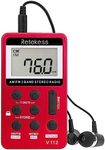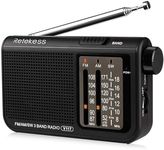Buying Guide for the Best Shortwave Radios
Choosing the right shortwave radio can be a rewarding experience, especially if you're interested in exploring global broadcasts, amateur radio, or emergency communications. Shortwave radios are designed to receive signals from long distances, making them ideal for listening to international stations and broadcasts. When selecting a shortwave radio, consider your primary use, whether it's casual listening, emergency preparedness, or hobbyist activities. Understanding the key specifications will help you make an informed decision that suits your needs.Frequency CoverageFrequency coverage refers to the range of frequencies that the radio can receive. This is important because shortwave radios can pick up signals from different parts of the world, and a wider frequency range means access to more stations. Typically, shortwave radios cover frequencies from 1.6 MHz to 30 MHz. If you're interested in listening to a variety of international broadcasts, look for a radio with broad frequency coverage. For hobbyists interested in specific bands, ensure the radio covers those frequencies.
SensitivitySensitivity is the radio's ability to pick up weak signals. This is crucial for shortwave radios as signals can be faint due to long distances. Radios with higher sensitivity can detect weaker signals, providing clearer reception. Sensitivity is often measured in microvolts (µV). If you live in an area with poor signal reception or want to listen to distant stations, opt for a radio with high sensitivity. For casual listening in areas with strong signals, moderate sensitivity may suffice.
SelectivitySelectivity is the radio's ability to separate closely spaced signals. This is important when multiple stations are broadcasting near the same frequency. Good selectivity ensures you can tune into your desired station without interference from others. Selectivity is often measured in kilohertz (kHz). If you plan to listen in crowded frequency bands or areas with many stations, choose a radio with high selectivity. For less crowded bands, moderate selectivity might be adequate.
Tuning MethodsTuning methods refer to how you change frequencies on the radio. Common methods include analog dials, digital displays, and direct keypad entry. Digital tuning offers precise frequency selection and often includes features like memory presets. Analog tuning can be more intuitive for some users but may lack precision. If you prefer ease of use and quick access to favorite stations, digital tuning with memory presets is ideal. For a more traditional experience, analog tuning might be preferred.
PortabilityPortability refers to the ease of carrying and using the radio on the go. This is important if you plan to use the radio outdoors or during travel. Portable radios are typically lightweight and compact, with battery operation. If you need a radio for outdoor activities or emergencies, choose a portable model. For home use, a larger, stationary radio might offer better performance and additional features.
Power OptionsPower options indicate how the radio is powered, such as batteries, AC adapters, or solar panels. This is important for ensuring the radio can be used in various situations, including power outages. Radios with multiple power options offer flexibility and reliability. If you need a radio for emergency situations, look for models with battery and solar power options. For regular home use, an AC adapter might be more convenient.
